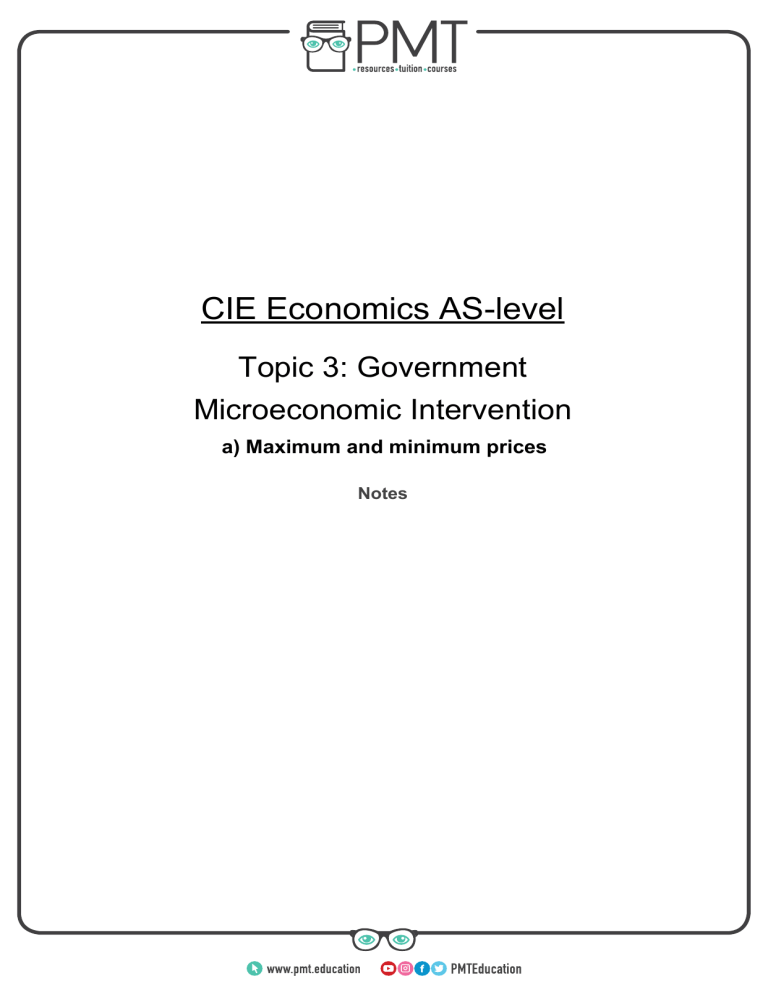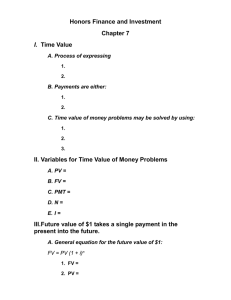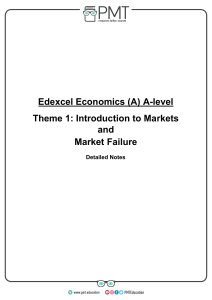
CIE Economics AS-level Topic 3: Government Microeconomic Intervention a) Maximum and minimum prices Notes www.pmt.education Maximum price The government might set a maximum price where the consumption or production of a good is to be encouraged. This is so the good does not become too expensive to produce or consume. Maximum prices have to be set below the free market price, otherwise they would be ineffective. The free market equilibrium is at P1, Q1. www.pmt.education If suppliers only produced at Q3, some consumers would be willing to pay P2. The shaded area shows the consumer surplus producers can take with the higher price. A quantity of Q3 would require rationing or auctioning, since quantity demanded is Q2. They prevent monopolies exploiting consumers. For example, in the EU, price caps on roaming charges are in place to make sure it is not too expensive for consumers to use their mobile phones abroad. Maximum prices control the market price, but this could lead to government failure if they misjudge where the optimum market price should be. Maximum prices could lead to welfare gains for consumers by keeping prices low, and they could increase efficiency in firms, since they have an incentive to keep their costs low to maintain their profit level. However, it could reduce a firm’s profits, which could lead to less investment in the long run. Moreover, firms might raise the prices of other goods, so consumers might have no net gain. Minimum price The government might set a minimum price where the consumption or production of a good is to be discouraged. This ensures the good never falls below a certain price. For example, the government might impose a minimum price on alcohol, so it is less affordable to buy it. The National Minimum Wage is an example of a minimum price. Minimum prices would reduce the negative externalities from consuming a demerit good, such as alcohol. Minimum prices have to be set above the free market price, otherwise they would be ineffective. The minimum wage could be used as an example. www.pmt.education The diagram suggests that a minimum wage leads to a fall in the employment rate (Q1 – Q3). It depends on what level the wage is set, though. An inelastic labour demand will mean there is only a small contraction in demand for labour (Q1 – Q3). This minimum price will yield the positive externalities of a decent wage, which will increase the standard of living of the poorest, and provide an incentive for people to work. www.pmt.education





